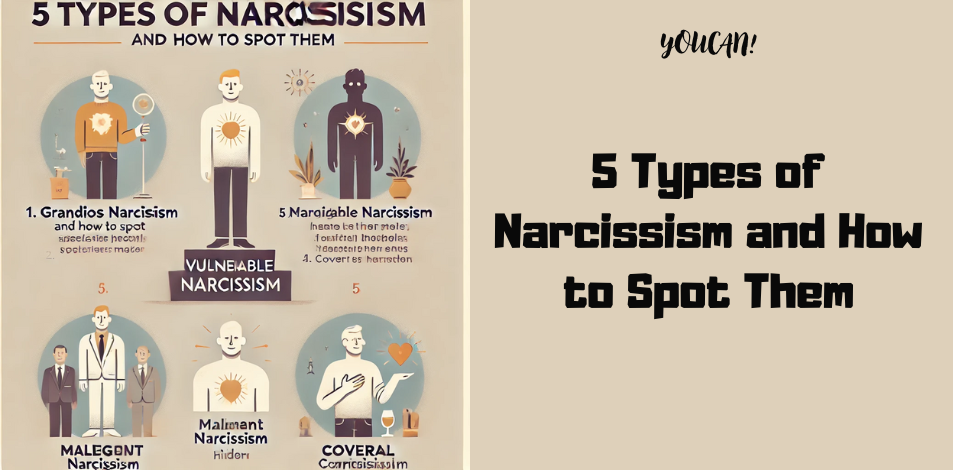
Narcissism is often misunderstood as simply a love for oneself, but it is more complex, manifesting in various forms. Narcissistic traits can range from extreme confidence to manipulative behaviors that negatively impact relationships. Understanding the different types of narcissism helps in identifying patterns of behavior that might otherwise be difficult to recognize. Here are the five most common types of narcissism and how to spot them:
Grandiose Narcissism
This is the most stereotypical form of narcissism, where individuals exhibit a heightened sense of self-importance. They believe they are superior to others and often seek admiration and attention.
- How to Spot It:
- Excessive boasting about achievements
- Lack of empathy for others
- Inflated ego and entitlement
- Tendency to dominate conversations
- Desire for admiration and validation
Example: They might tell stories that magnify their role or success, regardless of how trivial the situation is.
Related : History of Narcissistic Personality Disorder (NPD)
Vulnerable (Covert) Narcissism
Unlike grandiose narcissists, vulnerable narcissists appear more insecure and sensitive. They might display self-pity and be easily offended, but underneath this vulnerability lies a deep sense of entitlement and self-obsession.
- How to Spot It:
- Frequent feelings of inadequacy or low self-esteem
- Oversensitivity to criticism
- Passive-aggressive behavior
- Playing the victim or expecting special treatment due to suffering
- Fluctuating between extreme confidence and deep insecurity
Example: A vulnerable narcissist might avoid direct confrontation but will complain or seek reassurance that they are still valued.
Malignant Narcissism
This type combines traits of narcissism with antisocial behavior, aggression, and sometimes paranoia. Malignant narcissists are often exploitative, manipulative, and lack remorse for their actions.
- How to Spot It:
- Manipulative and controlling behaviors
- Lack of empathy, often cruel to others
- Willingness to hurt or exploit others for personal gain
- Paranoia or mistrust of others
- Enjoyment of causing pain or distress
Example: A malignant narcissist might use charm to manipulate someone, only to turn cruel once they’ve achieved their goal.
Communal Narcissism
Communal narcissists are those who derive their sense of superiority from being perceived as highly altruistic or moral. They present themselves as selfless or compassionate but expect constant praise for their good deeds.
- How to Spot It:
- Frequent need for recognition as a “good” person
- Constantly mentioning charitable work or “good deeds”
- Desire to be seen as morally superior
- Easily offended if their kindness is not acknowledged
- Underlying self-interest in their supposed altruism
Example: They might insist on helping someone in public only to brag about it or use the situation to enhance their reputation.
Somatic Narcissism
Somatic narcissists are overly focused on physical appearance, health, or sexual appeal. They derive their self-esteem from the way they look and often seek validation for their physical attributes.
- How to Spot It:
- Obsession with body image, fitness, or attractiveness
- Frequently seeking compliments on appearance
- Constant comparison of their looks to others
- Manipulating others through sexuality or physical appeal
- Focus on physical pleasure or indulgence
Related : How to Avoid Falling Into a Narcissistic Relationship Pattern
Example: A somatic narcissist might spend hours talking about their workout routine or fishing for compliments about their appearance, demanding attention for their looks.
Conclusion
Narcissism comes in many forms, each presenting its own set of behaviors that can be challenging to navigate in personal or professional relationships. While narcissism can sometimes seem benign, recognizing these types is essential for understanding how it can affect interactions and emotional well-being. Spotting the signs can help you protect yourself from the negative impact of a narcissist’s behavior.




